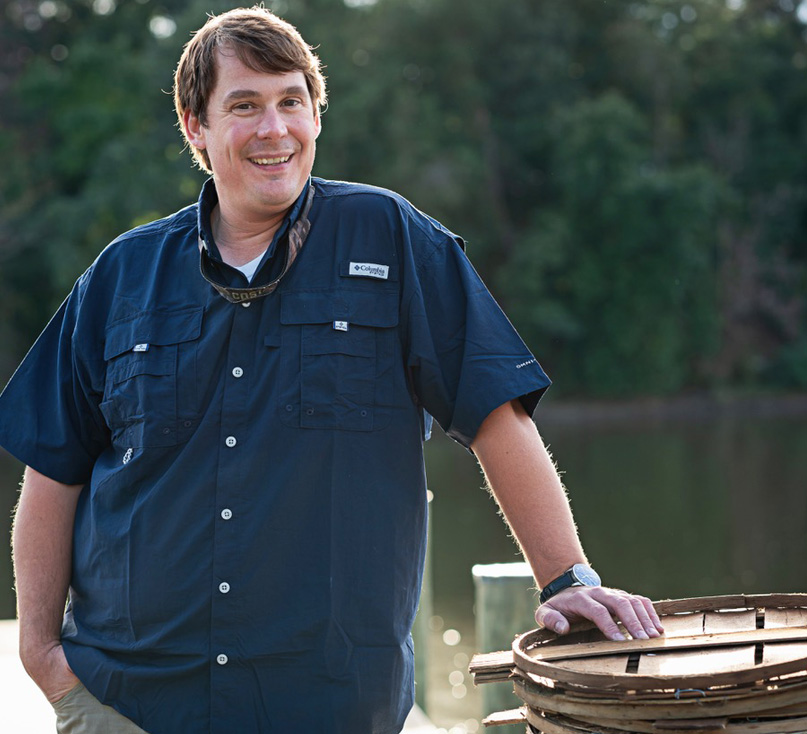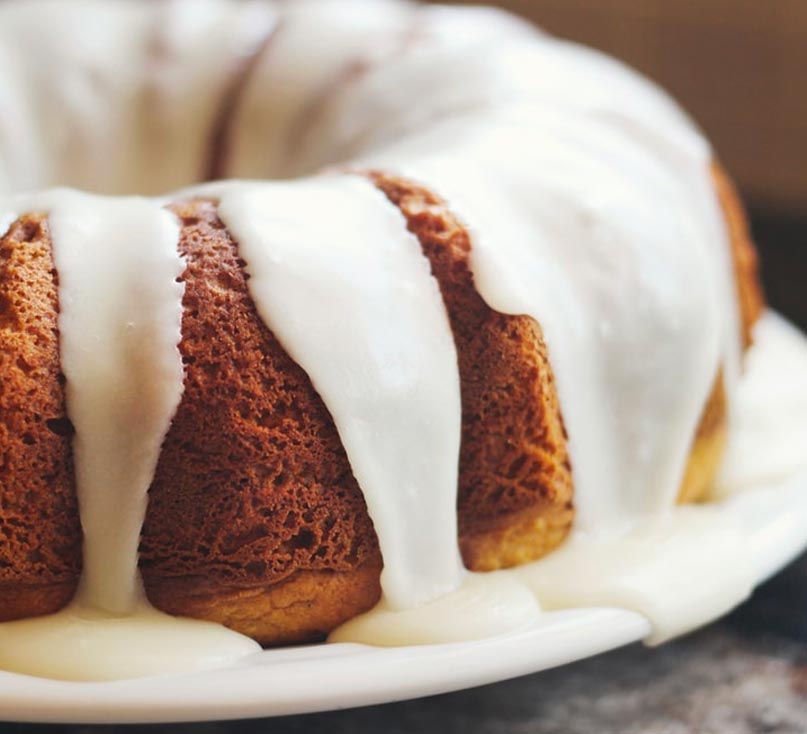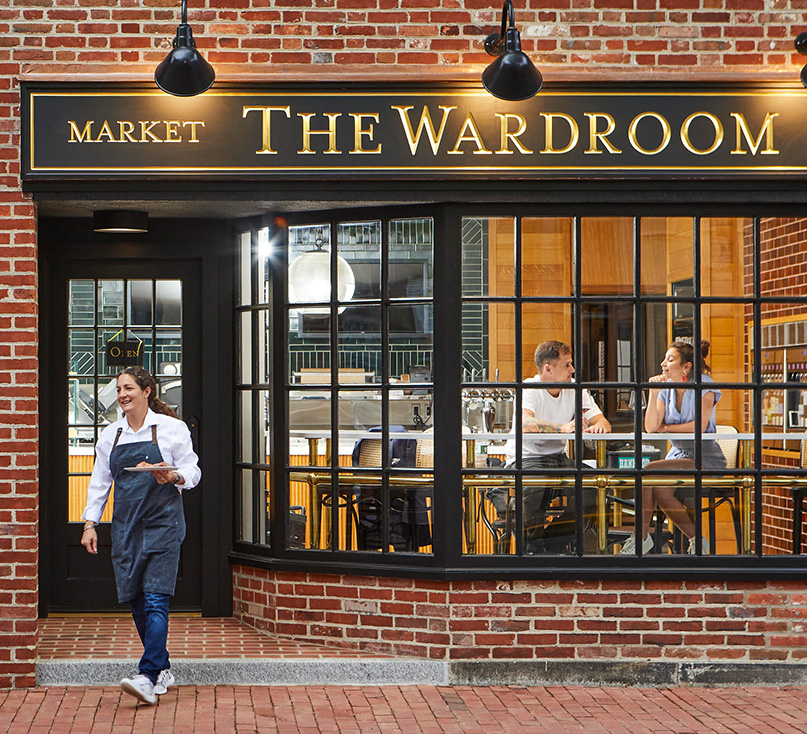The whole Chesapeake Bay is anticipating the coming of Summer, and with it, the ultimate seasonal staple on most local menus: Steamed Crabs. Executive Chef Harley Peet of Bas Rouge and Bluepoint Hospitality in Easton, MD, is sharing his techniques to ensure that the texture, taste, and consistency of the crabmeat is always ideal.
Peet is not only a chef, but a highly skilled waterman. Having grown up as a competitive sailor on Lake Michigan, Peet was drawn to the Chesapeake twenty years ago for its challenging navigational patterns, as well as to follow his culinary aspirations; his brother, pursuing his own marine path, has reached the America’s Cup level of competition.
When it comes to crabbing and steaming, planning and preparation is essential. Peet uses an industrial beer keg that he’s cut in half for optimal stacking-and-steaming of multiple layers of crabs. Peet is adamant that crabs should never be stacked upside down as they die quickly and contaminate the rest in the steamer. That is a big no! no! And to not sit the crabs, directly in the liquid when steaming: if you throw crabs in a bushel set in water, he warns, the resulting crabmeat will be mushy, and only good for she-crab soup. Allow for 6” of steaming liquid, he advises, which should be a blend of water, beer [Budweiser, to be exact!] and apple cider vinegar. The vinegar helps the cooked crabmeat pull easily from the shell.
The keg container must be cold to start, and the crabs should be stacked side-by-side, neatly layer upon layer set on an aluminum tray – never stack crabs so tight on each layer and treat them nicely. On each layer, sprinkle Old Bay seasoning across the crabs, covering their eyes, which calms them down. After stacking the crabs make sure they are secure, do a last check to remove any crabs that may have died, then put a tight-fitting lid and light the flame to begin the steaming process. Add a weight if necessary, as the crabs may try to push the lid off.
There’s no set time for optimum steaming as it varies on the number of crabs in the steamer and how big they are. The best way to know when a crab is cooked, pay attention to the color of its knuckle: when it turns red, turn off the flame. The crabs are done and ready to eat. Peet recommends keeping fresh lemon halves on hand, not just to add a bright squirt of acid to the rich crabmeat, but as a great natural hand cleanser. For maximum juice, he advises setting the lemons near the steamer, where the heat will open up the lemons for easy squeezing.
“To complete the crab feast, all it takes is extra Old Bay, melted butter, and saltines… That’s life on the Chesapeake!” says the chef with a contented, windblown smile.





